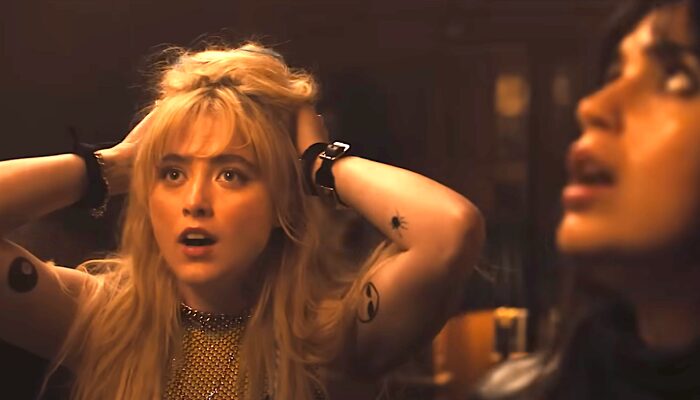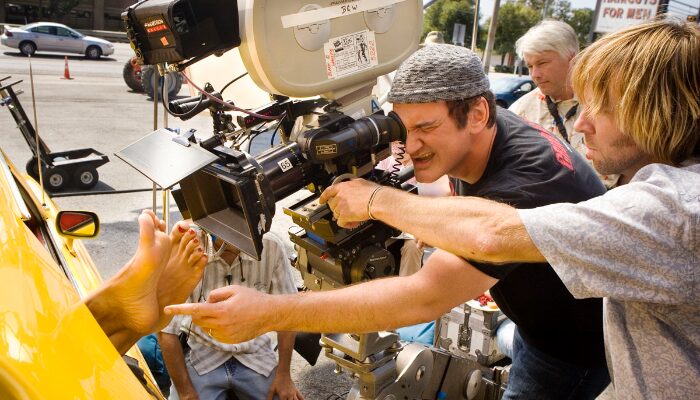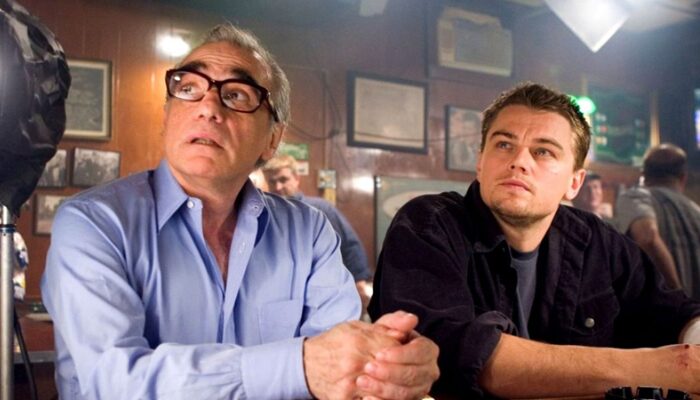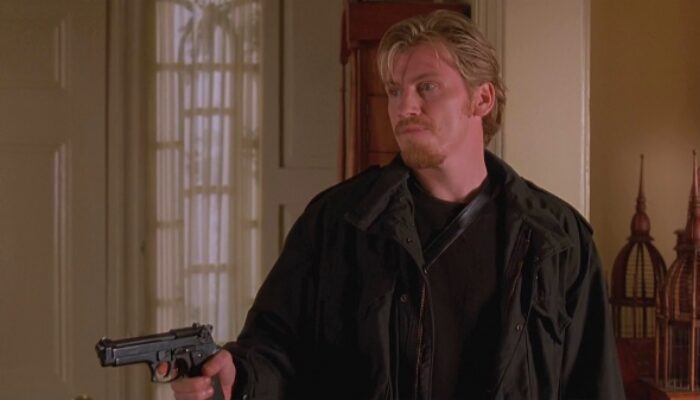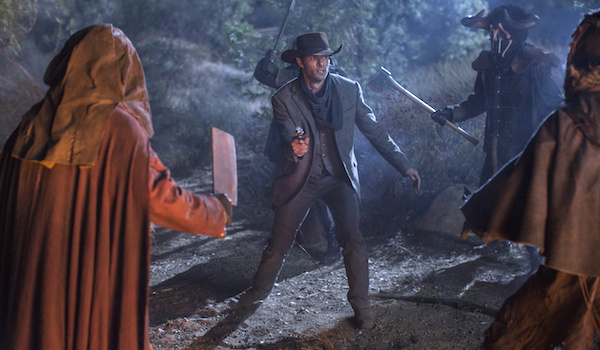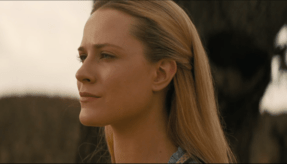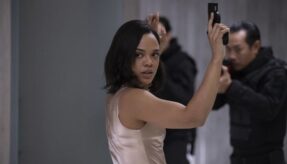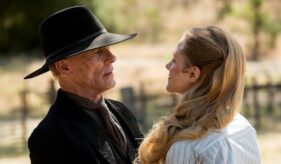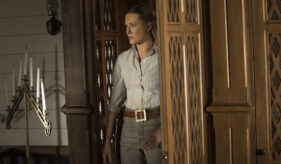TV Review: WESTWORLD: Season 1, Episode 3: The Stray [HBO]
Westworld The Stray Review
HBO‘s Westworld: Season 1, Episode 3: The Stray continued the tantalizing ‘new storyline for Westworld’ plotline as well as the newcomer, the secret Dolores Abernathy (Evan Rachel Wood) investigation, and the anomaly plotlines.
The newcomer storyline was good, as William (Jimmi Simpson) acclimated himself to Westworld and its inhabitants, but the other storylines in the episode far out shone it. The newcomer storyline segments were the bookends to The Stray. The viewer didn’t really get to know anything new about William and Logan (Ben Barnes) during The Stray, except that each was paying $40K a day to be in Westworld.
The real substance of The Stray belonged to the other, aforementioned storylines. The Stray showed that Westworld founder Dr. Robert Ford (Anthony Hopkins) had already created his new storyline and was implementing it piece-by-piece. Unlike Programmer Lee Sizemore (Simon Quarterman) high adventure, bath of blood storyline, Dr. Ford’s new storyline integrated into the preexisting storylines of the Hosts. When Host’s pasts were updated with Ford’s new storyline information, every affected Host had their personalities and backstories expanded upon. The surrogate for all of those changes and updates in The Stray was Teddy Flood (James Marsden).
The new storyline (the portion shown) was not what I was expecting (a good thing). I thought Dr. Ford’s new storyline would have something to do with The Maze. I was wrong. The Maze seems to be something separate from the new storyline but no less intriguing.
The Dolores investigation in The Stray was mundane but it revealed that Dolores was making connections between past and present clandestine conversations. The sophistication in her programming was astonishing e.g. her response in Analysis mode: “Personal questions are an ingratiation scheme.” No one in the series has said out loud that Dr. Ford is a genius. No one has to. Everyone that worked or visited Westworld existed in that genius.
Westworld Head of Programming Bernard Lowe (Jeffrey Wright) is giving Dolores clues to self-awareness, breadcrumbs, and she is completely unaware of it. Lowe sees Dolores as his child in a way. As such, he had begun protecting her from the violent world she exists in e.g. the voice: “Kill him.” Was that Lowe’s voice in Dolores’ head, giving her advice, or was it Arnold’s voice? Through the anomaly, Dolores began seeing what was going to happen before it happened, using memory as prescience. Dolores was able to effectively use that information as a shield against violence in The Stray. By doing so, Dolores broke her vow to Lowe. She did not stay within her narrative loop.
Another Host, the namesake of this episode, also deviated from his loop. Dubbed Woodcutter (Tait Fletcher), his section of The Stray served two functions: 1.) it showed that a Host could act on an impulse not part of present or past personalities, and 2.) it was another example of a Host that could wake itself up from Sleep Mode. The latter was first seen in Maeve Millay during Chestnut. It would seem the spineless techs that were working on Maeve in Chestnut never reported the incident (and somehow the incident was not seen on security cameras).
Dr. Ford was in Bernard Lowe’s head during The Stray, or at least Dr. Ford thought he was. Dr. Ford was unaware of Lowe’s investigation of Dolores. From Dr. Ford’s conversation and the nostalgia that he exhibited toward Old Bill in The Original, I thought that Dr. Ford was sentimental about the Hosts. The Stray proved otherwise when Dr. Ford instructed a new Westworld employee that Hosts didn’t feel cold, had no modesty, and didn’t feel pain (cutting into the Host’s face with a scalpel). Those words and that demonstration might have been for Lowe’s benefit as well as the new employee’s. It may have been a subtle warning, like the one the Fire Chief gave to Guy Montag in Fahrenheit 451. Stop.
The Stray was the first Westworld episode to employ flashbacks. The flashbacks were used as a story-telling device and to emphasize emotional moments. Both uses of it in The Stray were highly effective. It may have reminded Christopher Nolan cinephiles of that director’s particular use of the same technique (in Batman Begins and in Inception) to drive home a specific point.
Dolores collapsing at the end of The Stray was a dubious moment. Was she collapsing because of what she had seen or done? Had the events at her home gotten to her emotion programming so thoroughly? Or did she collapse because of the anomaly that Lowe had allowed to continue to exist within her? I believe it was a mixture of the two. The collapse’s effect on William and Logan: a damsel in distress scenario was initiated. Dolores’ true effect on their stay in Westworld: unpredictability.
Leave your thoughts on this Westworld The Stray review and this episode of Westworld below in the comments section. Readers seeking more TV show reviews can visit our TV Show Review Page, our TV Show Review Twitter Page, our TV Show Review Facebook Page, and our TV Show Review Google+ Page. Readers seeking more Westworld can visit our Westworld Google+ Page. Want up-to-the-minute notification? FilmBook staff members publish articles by Email, Twitter, Tumblr, Google+, and Facebook.
Related Articles
FilmBook's Newsletter
Subscribe to FilmBook’s Daily Newsletter for the latest news!

